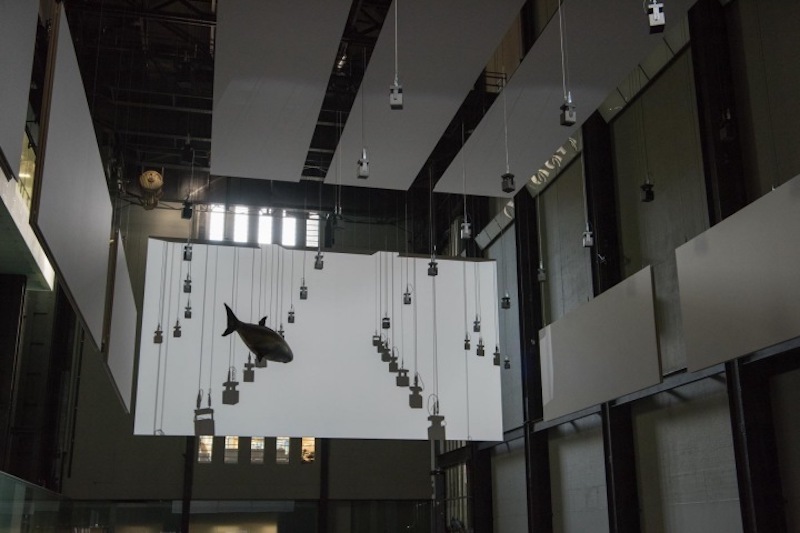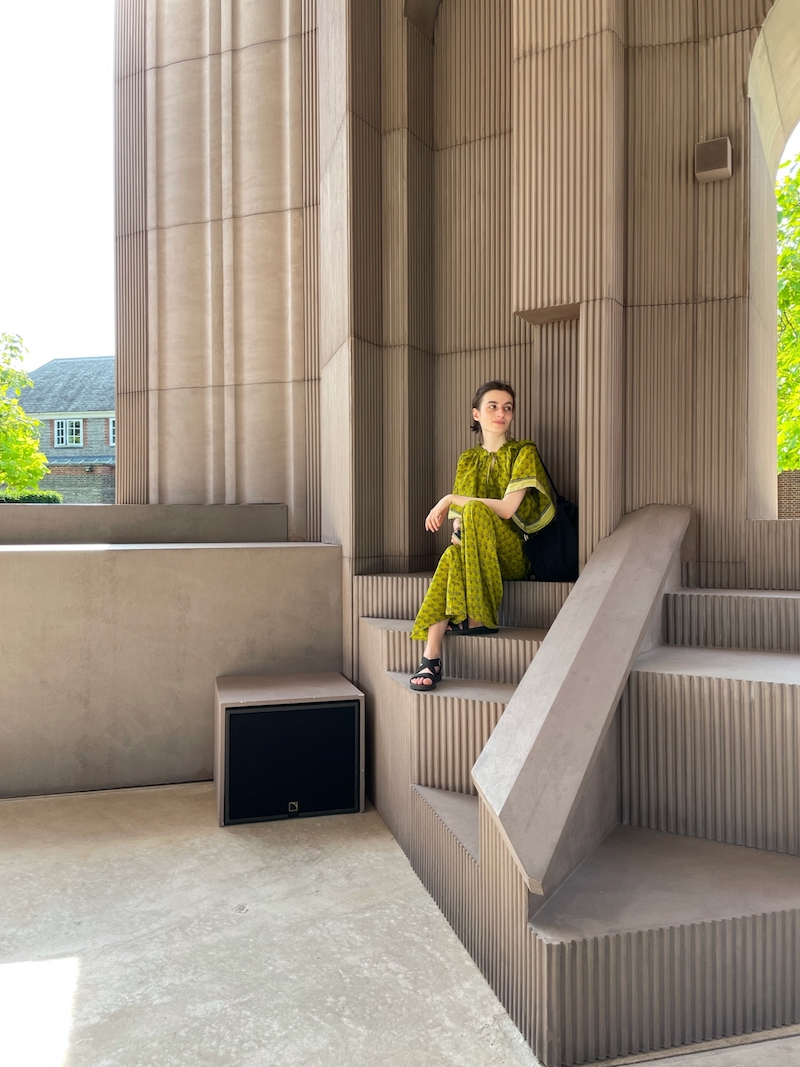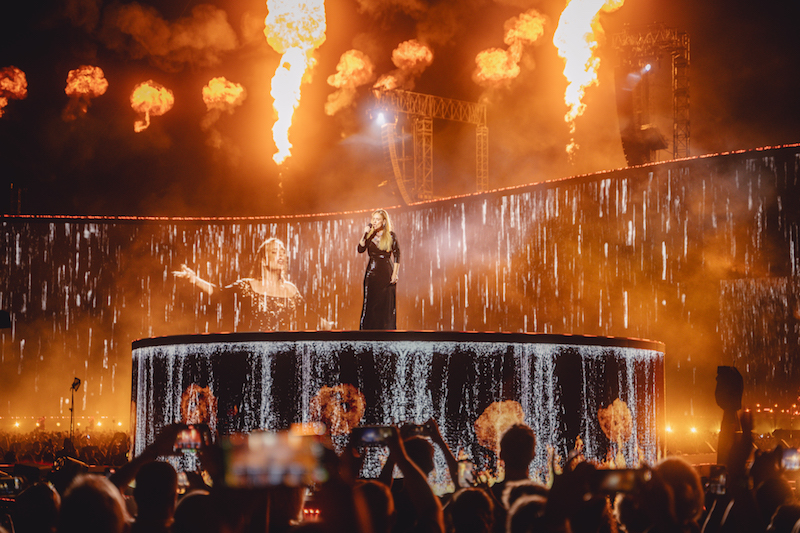by Ann Binlot // Oct. 15, 2024
Philippe Parreno envisioned an installation that questioned the idea of machine and life when he conceptualized ‘Anywhen’ for the Tate Modern. The immersive exhibition opened in 2016, stretching across the museum’s Turbine Hall, a massive 3,300 square meters. Composed of video screens, mylar fish that floated in the air and bacteria, the components moved in sync, controlled by microorganisms located in a nearby room. The French artist intended for people to use the space like a park, to pass through it, sit and relax, and take in the multi-sensory experience, from the balloons passing in the air above, the cephalopods dancing on the screen, the sound of the water and the 84 speakers dotting the space, rising and descending. Parreno hired musicians Factory Floor and sound designer Nicolas Becker to assemble the sound aspect of the exhibition, which was brought to life by the technology of L-Acoustics.

Philippe Parreno: ‘Anywhen,’ 2016, at The Tate’s Turbine Hall // Courtesy of L-Acoustics
“This project was groundbreaking for us, as it marked the first application of our new L-ISA immersive audio technology in an art exhibit,” Guillaume Le Nost, executive director of research and innovation at L-Acoustics told Berlin Art Link. “We deployed 84 5XT speakers and eight SB18 subwoofers in a ceiling grid configuration that could independently move up and down, allowing for real-time spatialization of sound objects and creating a truly immersive and responsive audio environment that complemented Parreno’s multi-sensory vision.”
If an artist wants a multifaceted immersive sound experience, or even the ability to control the auditory journey from the most subtle whisper to water surrounding you as you surf a barrel wave, L-Acoustics’s L-ISA offers a range of possibilities. “Concerts traditionally use stereo PA systems—with only a left and right channel—to give some directionality,” explained Le Nost. “It’s like painting with just two colors. Using L-ISA, on the other hand, is more like having a full palette.”

Brian Eno: ‘IN A GARDEN,’ 2021, in L-ISA Immersive Hyperreal Sound at Serpentine Pavilion, designed by Counterspace, Kensington Gardens, London
In 2021, Brian Eno created a soundscape to complement Johannesburg-based architectural studio Counterspace’s pavilion for Serpentine Galleries at Kensington Gardens. When commissioned, the creatives were asked what they should do about climate change. The musician produced a wide span of sound for the geometric, open-air structure. “I tried to make a piece of music that would be ambiguous enough for you not to know what was music and what was the world outside,” he said in a video by Counterspace. Consisting of eerie echos, vibrations and animal noises, the sounds Eno added were generated by computer software. The L-ISA technology allowed visitors to feel as if they were wrapped within the sound, with it projecting from above their heads and below their feet.
“What made this installation particularly interesting was Eno’s approach to generative music within a fixed timeframe,” said Le Nost. “While the composition was essentially a long, looped recording, to take full advantage of L-ISA’s spatialization capabilities, we incorporated random elements within the spatialization itself. This created subtle variations in the sound placement, much like, as Eno beautifully put it, ‘plants had moved a bit during the night.’”
For both Parreno and Eno’s projects, said Le Nost, “L-Acoustics technology served to enhance the artists’ visions, providing tools for precise sound placement, immersive experiences and subtle, evolving soundscapes. These installations are among the first to demonstrate how advanced audio technology can play a crucial role in contemporary art, blurring the lines between sound, space and experience.”

Adela in Munich, 2024 // Copyright Alexandra Waespi
Most recently, L-Acoustics provided the sound system for superstar Adele’s month-long residency in Munich this August. A stadium that could hold 80,000 people and featured the world’s largest LED screen was built specifically for the concert series, creating a unique challenge for sound designer Johnny Keirle, who collaborated with L-Acoustics Certified Partner Britannia Row Productions. “The sheer scale and unconventional shape of the venue, combined with the creative demands of the production, required an innovative approach,” said Keirle. They had to figure out how to situate the speakers without disturbing the sight lines of the enormous LED screen. The main system was hung high above the screen, and mini lamppost towers discreetly embedded within the audience, allowing for sound so clear that no matter where you were sat, it felt as if Adele was right next to you, singing her hits like ‘Easy on Me’ and ‘Someone Like You.’





















